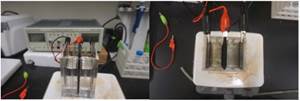New Jersey DEP Proposes Comprehensive Environment Justice Regulation
New Jersey proposed environmental justice regulations take unprecedented action to require consideration of impacts on overburdened communities in the permitting process. This regulatory process could serve as a model for other states.
The New Jersey Department of Environmental Protection (DEP) in June officially published the highly anticipated proposed implementing rules of the state’s Environmental Justice Law. The statute requires environmental justice-specific analyses for facilities that are seeking state agency approval for new, renewal, or expansion permits where the facility is located in an "overburdened community," defined as any Census block group with low-income, minority, or non-English speaking populations exceeding specified thresholds. The proposed rule is open for public comment until September 4, 2022.
The New Jersey law is arguably the most far-reaching state environmental justice law in the country, taking unprecedented action to require consideration of impacts on overburdened communities in the permitting process. The proposed rules also take important steps to develop actionable, practical approaches to assessing cumulative impacts and disproportionate effects on overburdened communities – two concepts that have presented longstanding challenges for measurement. New Jersey’s action will likely serve as a model for future environmental justice regulatory programs in other states.
The proposed rules include a six-step procedural overview roadmap describing how the regulations would work. The roadmap walks through the required EJ evaluation, beginning with the initial screen (Step 1), preparing an Environmental Justice Impact Statement (EJIS) (Step 2), obtaining DEP’s authorization to proceed with the permit application (Step 3), conducting the required public engagement (Step 4), and DEP review of the required information and final decision (Steps 5 and 6, respectively).
Under the proposed rules, an applicant filing a covered permit must demonstrate that the facility would not disproportionately impact an overburdened community by modeling the facility’s operational impacts. The applicant conducts facility modeling at Step 1 of the procedural roadmap to analyze the “environmental and public health stressors” affecting the overburdened community.
The proposed rules define “environmental and public health stressors” as “sources of environmental pollution . . . or conditions that may cause potential public health impacts.” If a new or proposed expanded facility or facility seeking a renewal permit cannot avoid disproportionate impacts (i.e., creates “adverse cumulative stressors” or contributes to adverse environmental and public health stressors in a community already subject to negative cumulative stressors), heightened regulatory scrutiny of the permit is triggered, including potentially denying permits for new facilities or approving, with conditions, permit renewals or facility expansions.
Where a proposed new facility cannot avoid a disproportionate impact, the state must deny the permit unless it would serve a “compelling public interest” in the overburdened community. This standard is met if the facility (1) primarily serves an essential environmental, health, or safety need of overburdened community members, (2) is necessary to serve the essential environmental, health, or safety need, and (3) no other reasonably available means exist to meet this need. DEP will consider the relevant overburdened community members’ feedback in making this determination.
Crucially, under the proposed rules, “the economic benefits of the proposed new facility shall not be considered in determining whether it serves a compelling public interest in an overburdened community.” This limitation is critical because economic benefits – from job growth to increased economic activity – are frequently used as countervailing arguments related to adverse impacts of permitted facilities on overburdened communities.
DEP plans to hold public hearings on July 11, July 13, July 27, and July 28. These are useful opportunities to obtain further information about the proposed rules directly from DEP and inform what will likely be a model for other similar environmental justice permitting laws across the country. If you have any questions or would like additional information regarding this issue, please contact Jeff Hannapel with NASF at jhannapel@thepolicygroup.com.
This update is courtesy of the National Association for Surface Finishing (NASF). For more information or to become a member, visit nasf.org.
Related Content
Novel Wastewater Treatment Targets Micropollutants
Swiss wastewater treatment technology provider Oxyle specializes in advanced wastewater treatment for removal of highly persistent micropollutants such as PFAS.
Read MoreNASF/AESF Foundation Research Project #122: Electrochemical Approaches to Treatment of PFAS in Plating Wastewater - 7th Quarterly Report
The NASF-AESF Foundation Research Board has selected a project on addressing the problem of PFAS and related chemicals in plating wastewater streams, studying PFAS destruction via electrooxidation and electrocoagulation. Our last report described the results from experiments of EO with a Magnéli phase Ti4O7 anode on the degradation of eight perfluoroalkyl acids (PFAAs). In this seven quarter report, we describe work to further explore how the degradation of different PFAAs are related to their molecular structures.
Read MoreNASF/AESF Foundation Research Project #122: Electrochemical Approaches to Treatment of PFAS in Plating Wastewater - 5th Quarterly Report
This paper covers a research grant at the University of Georgia - Griffin on developing electrochemical approaches to remove PFASs present in plating wastewaters, under the direction of Professor Qingguo (Jack) Huang. This fifth quarter report assessed eight PFAAs most commonly found in wastewaters, by electro-oxidation with a Ti4O7 anode across a range of anodic potentials in solutions of different compositions and at varying operating conditions.
Read MoreIn-House Blackening of Ferrous and Non-Ferrous Metals
Process satisfies customers’ shipping requirements while meeting stricter water regulations in times of drought.
Read MoreRead Next
Episode 42: An Interview with Robin Deal, Hubbard-Hall
Hubbard-Hall wastewater treatment specialist Robin Deal discusses the latest trends in wastewater management.
Read MoreThe 2024 Ford Mustang: All the Colors Available
Although Chevrolet has announced the end of the Camaro and Dodge is offering “Last Call” editions of the Charger and Challenger, the Ford Mustang is launching to its seventh generation.
Read MorePowder Coating 4.0: Smarter, Faster, More Efficient and Connected
New tools reduce cost and waste, lower manufacturing footprint of powder coating operations.
Read More

























